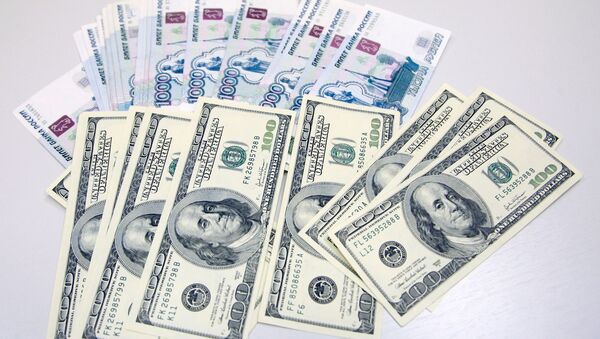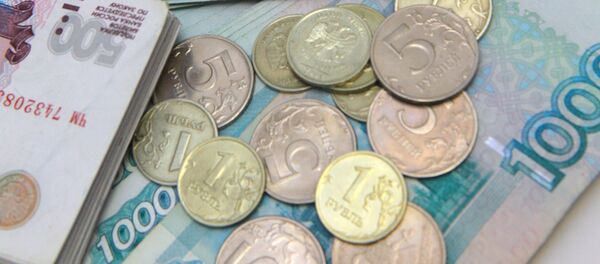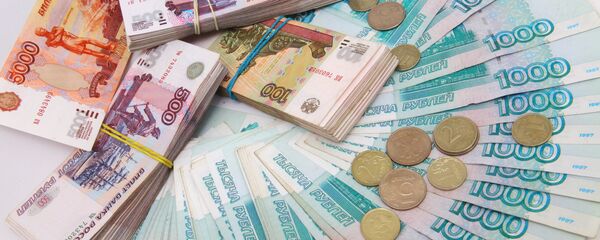MOSCOW, December 9 (Sputnik) – The dramatic plummet of Russia’s national currency, the ruble, during the past two month amid international sanctions and a significant drop in oil prices has put pressure on the nation’s export-dependent economy. There is no sign of stabilization in the ruble’s FX rate and its decline is largely expected to continue.
Russia’s ruble (RUB) has been the worst performer among the 24 developing nations’ currencies in the global market this year, as evidenced by the Bloomberg data. The ruble depreciated 39% since the beginning of this year, 25% of which has happened during the last two months.
Trouble for the emerging markets’ currencies has been brewing since last October, when the US Federal Reserve announced it would trim its bond-buying program, which inevitably led to the strengthening of the dollar against other currencies. The first effects of the Fed trim hit the ruble in January, when the RUB to USD FX rate slid from 32.8550 to 35.1537, or roughly 6% as the dollar-denominated liquidity had become more expensive due to the Fed monetary tightening, pushing up the borrowing costs internationally.
However, the initial effects of the limitation imposed on Russia’s borrowing of the dollar-denominated liquidity were limited, as 90-day loans were still allowed. The situation got worse for the ruble’s FX rate on 12 September, when the US pushed through the new sanctions, limiting the maturity of dollar-denominated loans to Russia to 30 days. The ruble plunged soon thereafter: on 12 September one US dollar bought 37.7520 rubles, on 1 October it bought 39.6897 rubles, on 1 November the RUB-USD FX rate was 43.7100.
In an unsuccessful attempt to help the ruble, Russia’s Central Bank (CBR) took an important measure to boost the market’s confidence in the national currency by letting the ruble float free and limited ruble-denominated liquidity into the economy on 10 November. As a consequence, in mid-to-late November the ruble strengthened for a while, from 47.3110 for $1 on 14 November to 44.8364 for $1 on 24 November, but only to see its later plummet to record lows of 54.4554 on 4 December.
However, the devaluation of the ruble has had some positive effect in Russia. The nation’s budget is accounted in rubles, meaning in the lack of the dollar-denominated income a cheaper ruble allows keeping the budget’s income and spending roughly unchanged. Adding to the fiscal targets, the positive effects of a cheaper ruble have redounded upon Russia’s exporters, rendering them more competitive in the global surrounding.
Nevertheless, Russia’s economy is suffering amid the shrinking consumer demand, stalling growth and faltering finance. In case no positive development is achieved in the Ukrainian crisis, possibly easing or lifting the international sanctions, the nation’s economy may shrink quicker than anticipated at this point. Another hope would be a rebound in oil prices, but such development is considered nearly impossible in the short-to-mid-term.





